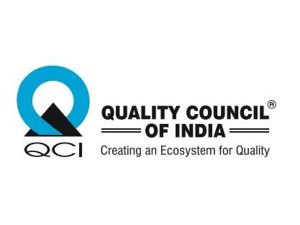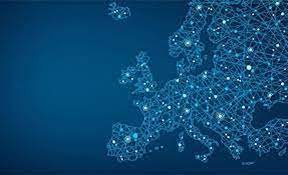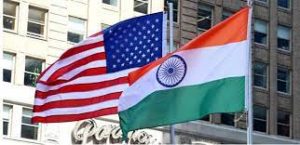Today Current Affairs:7th October 2022 for UPSC IAS exams, State PSC exams, SSC CGL, State SSC, RRB, Railways, Banking Exam & IBPS, etc
Table of Contents
Infant Mortality Rate:

The country’s female Infant Mortality Rate (IMR) dropped to same level as males
- India has registered a decline in female infant mortality rate.
- In sixteen states, IMR remained higher for female babies than male but the gap had reduced since 2011.
- According to Sample Registration System Statistical Report 2020, Chhattisgarh had the highest gap in 2020, with a male infant mortality rate of 35 compared to female infant mortality rate of 41.
- Infant mortality is the death of an infant before his or her first birthday.
- The infant mortality rate is the number of infant deaths for every 1,000 live births.
- In addition to giving us key information about maternal and infant health, the infant mortality rate is an important marker of the overall health of a society.
Quality Council Of India (QCI):

The Quality Council of India is set to celebrate its Silver Jubilee at the Ambedkar International Centre in New Delhi
- Quality Council of India was set up in 1997, jointly by the Government of India and the Indian Industry represented by the three premier industry associations i.e. Associated Chambers of Commerce and Industry of India (ASSOCHAM),
- Confederation of Indian Industry (CII) and Federation of Indian Chambers of Commerce and Industry (FICCI), with Mr Ratan Tata as its first Chairman.
- QCI was established as a National body for Accreditation. It is a non-profit organization registered under the Societies Registration Act XXI of 1860.
- QCI has launched a marquee campaign–Gunvatta Se Atmanirbharta: India’s quality movement.
- The campaign aims to celebrate India’s quality hubs, create awareness about India’s landmark achievements and inform people about the many initiatives that India is embracing with an aim to enhance the quality of lives of all our citizens.
Digital Services Act:

The European Union (EU) has given final approval to online safety-focused legislation, which is an overhaul of the region’s social media and e-commerce rules
- Digital Services Act (DSA), the law tightly regulates the way intermediaries, especially large platforms such as Google, Meta, Twitter, and YouTube, function in terms of moderating user content.
- It will give better protection to users and to fundamental rights online, establish a powerful transparency and accountability framework for online platforms and provide a single, uniform framework across the EU.
Digital Services Act:
- Faster removals and provisions to challenge: The social media companies will have to add “new procedures for faster removal” of content deemed illegal or harmful.
- They will also have to explain to users how their content takedown policy works. It also allows for users to challenge takedown decisions taken by platforms and seek out-of-court settlements.
- Bigger platforms have greater responsibility: Under the DSA, ‘Very Large Online Platforms’ (VLOPs) and ‘Very Large Online Search Engines’ (VLOSEs), that is platforms, having more than 45 million users in the EU, will have more stringent requirements.
- Direct supervision by European Commission: These requirements and their enforcement will be centrally supervised by the European Commission itself.
- More transparency on how algorithms work: VLOPs and VLOSEs will face transparency measures and scrutiny of how their algorithms work.
- Clearer identifiers for ads and who’s paying for them: Online platforms must ensure that users can easily identify advertisements and understand who presents or pays for the advertisement. They must not display personalised advertising directed towards minors or based on sensitive personal data.
US-India Strategic Clean Energy Partnership:

Ministerial dialogue of US-India Strategic Clean Energy Partnership (USISCEP) to be held on 7th October 2022.
- The revamped USISCEP was launched in accordance with U.S.-India Climate and Clean Energy Agenda 2030 Partnership announced by Prime Minister Shri Narendra Modi and President Joe Biden at the Leaders’ Summit on Climate held in April 2021.
- The SCEP organizes inter-governmental engagement across five pillars of cooperation: (1) Power and Energy Efficiency; (2); Responsible Oil and Gas; (3) Renewable Energy; (4) Sustainable Growth and (5) Emerging Fuels.
- A new India-US Task Force on Biofuels was also announced to build on the scope of work on cooperation in biofuels sector.
- Strengthen the electric grid in India to support large-scale integration of renewables, including through smart grids, energy storage, flexible resources etc.
- Rechristening of Gas Task Force to India-US Low Emissions Gas Task Force, which would continue to forge collaboration between U.S. and Indian companies on innovative projects to support India’s vision of gas-based economy.
- Institutionalization of India Energy Modeling Forum with the constitution of Six Task Forces for carrying out research and modelling in different areas.
- Joint Committees have been set up to deliberate on Energy Data Management, Low Carbon Technologies and Just Transition in Coal Sector.
- Include smart grid and grid storage as part of the second phase of the Partnership to Advance Clean Energy (PACE)-R initiative anchored on the Indian side by the Department of Science & Technology.
United Nations Peacekeeping:

The United Nations peacekeeping chief Jean-Pierre Lacroix is undertaking a visit to India, among the largest troop contributing countries for its operations.
- Jean-Pierre Lacroix will visit India, the United Arab Emirates, Pakistan and Japan starting from October 6.
- He will participate in a two-day meeting organised by the Challenges Forum, the event CAF22, which brings together leading policymakers, practitioners and academics on key issues linked to peace operations.
- The CAF22 will be co-hosted by the organisation’s Indian partner the United Service Institution of India (USI). Under the overarching theme “Future of Peace Operations”.
- India is one of the largest troop and police contributing countries to U.N. peacekeeping missions and more than 5,700 Indian peacekeepers are deployed in nine out of 12 U.N. peacekeeping missions at present.
UN Peacekeeping:
- UN peacekeepers provide security and the political and peacebuilding support to help countries make the difficult, early transition from conflict to peace.
- There are three basic principles that continue to set UN peacekeeping operations apart as a tool for maintaining international peace and security.
- Consent of the parties:
- Non-use of force except in self-defence and defence of the mandate.
- Role of Security Council: The United Nations Charter gives the United Nations Security Council the responsibility to maintain international peace. The Security Council authorize peacekeeping operations through Chapter VII authorizations.
- Financing: As all UN Member States share the costs of peacekeeping, the General Assembly apportions these expenses based on a special scale of assessments, taking into account the relative economic wealth of Member States, with the permanent members of the Security Council required to pay a larger share.
- Consent of the parties:
- For its services, UN Peacekeeping has also received the Nobel Peace Prize.
- UN peacekeepers are often referred to as Blue Berets or Blue Helmets because of their light blue berets or helmets.
World’s Largest Producer And Consumer Of Sugar:

India emerges as the world’s largest producer and consumer of sugar and world’s 2nd largest exporter of sugar.
- In Sugar Season (Oct-Sep) 2021-22, a record of more than 5000 Lakh Metric Tons (LMT) sugarcane was produced in the country. Out of this, 35 LMT sugar was diverted to ethanol production and 359 LMT sugar was produced by sugar mills.
- Ethanol production capacity of molasses/sugar-based distilleries has increased to 605 crore litres per annum and the progress is still continuing to meet targets of 20% blending by 2025 under Ethanol Blending with Petrol (EBP) Programme.
- The EBP programme was launched by the Ministry of Petroleum and Natural Gas in 2003, to promote the use of alternative and environment friendly fuels.
- The Government has 10% blending target for mixing ethanol with petrol by 2022 & 20% blending target by 2030. However, considering the encouraging performance, due to various interventions made by the Government since 2014, the target of 20% ethanol blending was advanced from 2030 to 2025-26.
- Ethanol is an agro-based product, produced from sugarcane, maize, wheat, etc which are having high starch content. In India, ethanol is mainly produced from sugarcane molasses by fermentation process
- Ethanol can be mixed with gasoline to form different blends. As the ethanol molecule contains oxygen, it allows the engine to more completely combust the fuel, resulting in fewer emissions and thereby reducing the occurrence of environmental pollution.
- Since ethanol is produced from plants that harness the power of the sun, ethanol is also considered as renewable fuel.
Nobel Prize In chemistry 2022:

The 2022 Nobel Prize in chemistry was awarded to Carolyn R Bertozzi, Morten Meldal and K Barry Sharpless “for the development of click chemistry and bioorthogonal chemistry”
- Sharpless was the first scientist to work on ‘click chemistry’ – a branch of science that explores the assembly of molecules.
- Meldal and Dr. Sharpless – independently of each other – presented the copper-catalysed azide-alkyne cycloaddition (CuAAC), a reaction that is now widely used in fields like medicinal chemistry. The CuAAC reaction is an improved form of the azide-alkyne Huisgen cycloaddition.
- Bertozzi improved the field further by developing click reactions that work inside living organisms.
- These bioorthogonal reactions do not disrupt the normal chemistry of the cell.
Click chemistry:
- Click chemistry is a functional field where molecules snap together quickly and efficiently – literally like a click.
- It is defined as a “set of powerful, highly reliable, and selective reactions for the rapid synthesis of useful new compounds and combinatorial libraries through heteroatom links”.
Prachanda : Light Combat Helicopter

The Indian Air Force formally inducted the indigenously developed multi-role Light Combat Helicopter (LCH), Prachanda which is suitable for operating in high-altitude battlefields.
- The LCH is the only attack helicopter in the world which can land and take off at an altitude of 5,000 meters with a considerable load of weapons and fuel.
- The helicopter uses radar-absorbing material to lower radar signature and has a significantly crash-proof structure and landing gear.
- A pressurised cabin offers protection from Nuclear, Biological and Chemical (NBC) contingencies.
- The helicopter is equipped with a countermeasure dispensing system that protects it from enemy radars or infrared seekers of enemy missiles.
- LCH is powered by two French-origin Shakti engines manufactured by the HAL.




